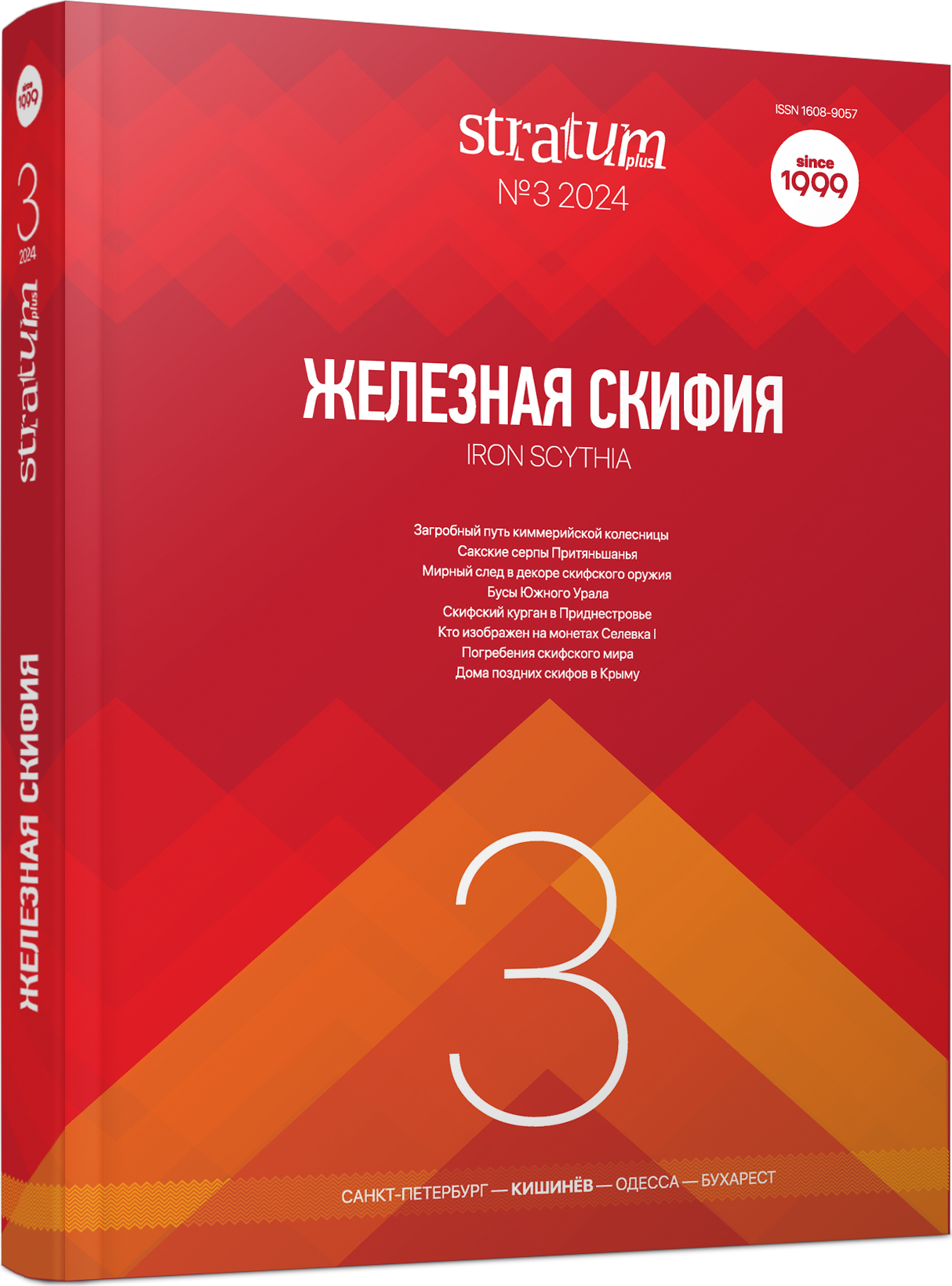«Где бодрый серп гулял и падал колос…»: бронзовые серпы сакского периода из Притяньшанья
“Where the Vigorous Sickle Walked and the Spike Fell…”: Bronze Sickles of the Saka Period from Tien Shan Region
Author(s): Sergey S. IvanovSubject(s): History, Archaeology, Ancient World
Published by: Издательский дом Stratum, Университет «Высшая антропологическая школа»
Keywords: Early Iron Age; ancient nomads epoch; Saka period; Tien Shan region; bronze sickles;
Summary/Abstract: The article discusses the use of bronze sickles in the Tien Shan region during the Saka period. These sickles were found as part of ritual hoards, among finds in settlements, and had accidental origins. They can be categorized into two main types based on their characteristics: full size and reduced. The chronology of bronze sickles in the Tien Shan region generally fits into the 8 th to 4 th centuries BC. Their formation was based on similar-looking tools of the Final Bronze Age, from which they differed in their smaller size and curved blades. Apparently, bronze sickles of the Saka period were a link in the evolutionary line of development of sickles in the Tien Shan region between the Bronze Age and the Wusun period — the early Middle Ages. Bronze sickles of the Saka period were generally used for harvesting grain crops and for making hay. Moreover, sickles of the Saka period could have had a sacred meaning since they were found in a few ritual hoards, but at the same time, they were never found in burials. In these ritual hoards, sickles could symbolize offerings from the common members of Saka society.
Journal: Stratum plus. Археология и культурная антропология
- Issue Year: 2024
- Issue No: 3
- Page Range: 15-27
- Page Count: 13
- Language: Russian
- Content File-PDF

